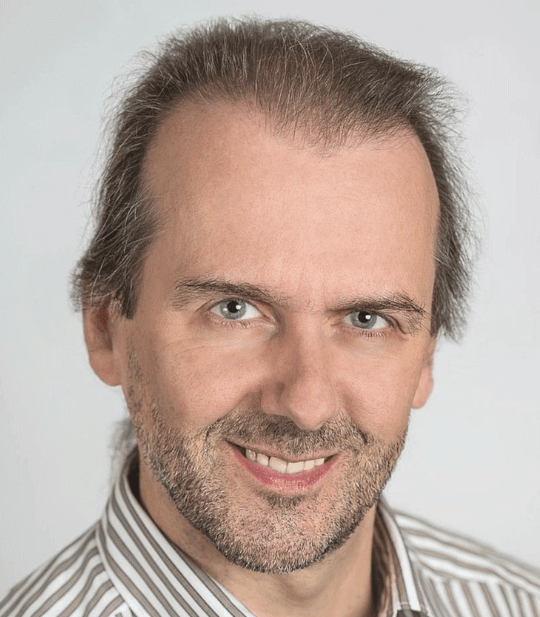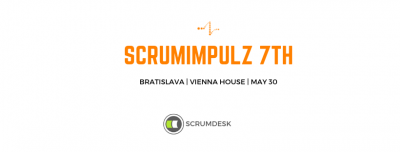The first time I saw Andrea Provaglio, I was quite new in Agile. Andrea shared of kinds of stuff that were pretty ‘high-soft-system-level’ for me at that time. But man, one year later I realized what he talked about.
It is not usual to see a speaker whose speech is different every time but always filled by wisdom, experience and entertaining. And it is not a coincidence that Andrea is invited to a lot of conferences every year. Many of them try to get Andrea year by ear.
So when we had a chance to get Andrea to Bratislava, we had to be on it. Because we believe you will get yourself to the next level.
About Andrea Provaglio
Enthusiastic and rational. Very balanced. With more than 20 years of experience in EU, US and Canada. He’s very flexible and brings his bright ideas to huge organizations as well as to small ultra-dynamic startups. Consultant and speaker.
Andrea helps IT organizations to implement better ways of doing business; and he does coach teams and individuals who want to improve technically and relationally.
His main focus is on assisting companies to transition to organizational and cultural models that are better suited to the kind of knowledge work that’s so typical of software development — which includes, but it’s not limited to, Agile and Lean.
In over 20 years of professional experience, I had clients in three different continents and I worked with organizations ranging from the United Nations to small and dynamics IT companies.
As part of Andrea’s regular activities, he enjoys sharing what he knows by speaking at major international conferences.
Growing Adaptive OrganizationsShort Synopsis
Agility at the full organizational level isn’t just about “delivering value”, if it’s to be sustainable. What needs to change in organizations’ perception of “what needs to be done”, to be able to manifest full agility?
Agile is old. Good and old. The fathers of Agile started experimenting with its principles and practices back in the ‘80s, when the problem they faced was how to provide a software production team with a more sensible way to develop code and deliver actual value to the stakeholders.
The second wave of Agile, a couple of decades later, was about scaling the production beyond one single team (we are still in that wave).
The third wave of Agile, which just recently started and went well beyond the realm of IT alone, finally realized that true agility can only be achieved when: 1) it’s adopted, in context-specific ways, throughout the entire organization and; 2) it includes the way the organization interacts with its market and environment (call it Business Agility or any other similar term).
What we are seeing today in the most innovative organizations, even outside of the IT industry, is that the underlying values and principles of agility are applied with a holistic approach to all organizational functions (finance, marketing, HR, operations, governance, procurement, production and so forth).
We also seeing how the organizational structure itself and the style of leadership in these organizations have evolved, to be consistent with the way agility works and delivers on its promises.
I know quite well from my experience with clients (working with tech teams, design teams, program and project managers, executives, HR, finance) and from helping them to rethink and restructure the way their organization works, that there are many challenges that an organization has to face to make this transition — and many pitfalls as well.
Among the different challenges (learning new skills and practices, descaling processes, decentralizing decision making and accepting inherent uncertainty, just to name a few) one that is often overlooked is how to change the perception of the organization itself, so that it can become a 21st-century, adaptive organization.
In fact, while “traditional” organizations revolved mainly around production — and were therefore perceived through that set of lenses — adaptive organizations include continuous organizational learning and high-efficiency collaboration as part of their operational DNA and of their long-term sustainability and success.
Therefore, one critical question is: how can we help people shifting their perception of “what needs to be done” considering three different but interrelated dimensions? And what are the practical implications of this?
In this session, I’m going to share some of the lessons I’ve learned while helping companies to rethink themselves. I’m not going to provide recipes or instructions (I don’t believe those can be replicated in a different context). Rather, I’d like to share the challenges that we encountered and talk about how the way we faced them helped the organization to grow into an adaptive one.
I’d also like to provide food for thought that might, hopefully, help executives, managers and leaders move in the direction of agility with a clearer sense of direction and with more realistic expectations.


